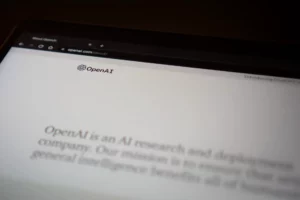In today’s interconnected digital world, trust and transparency in the realm of data security and financial operations are paramount. This is where SOC 1 reports, or Service Organization Controls Reports, step in as a vital assurance mechanism. But what exactly is a SOC 1 report, and why does it hold such significance?
A SOC 1 report, also known as a Service Organization Controls Report, is a comprehensive document that plays a pivotal role in evaluating the effectiveness of internal controls within a service organization. It is meticulously prepared by an independent auditor and serves as a meticulous assessment of the organization’s control environment. This encompasses an in-depth examination of its policies, procedures, and overall operations.
Let’s go into details of SOC 1, and learn how you can benefit from it.

What is a SOC 1 report?
SOC 1 report is a document that provides assurance on the effectiveness of internal controls at a service organization. The report is issued by an independent auditor and provides an assessment of the organization’s control environment, including its policies, procedures, and operations.
The purpose of a SOC 1 report is to provide user entities (i.e., organizations that use the services of the service provider) with confidence that the service organization has adequate internal controls in place to protect against material misstatements or losses. This is particularly important for service providers that handle sensitive data or financial transactions on behalf of their clients.
A SOC 1 report typically includes the following sections:
- Introduction: Provides background information about the service organization and the purpose of the report
- Scope: Describes the specific services and systems covered by the report
- Control environment: Details the overall control environment of the service organization, including its corporate governance structure, risk management processes, and compliance frameworks
- Control activities: Describes the specific controls in place at the service organization, including their design and operating effectiveness. These controls may cover areas such as security, data privacy, processing integrity, availability, and confidentiality
- Control testing: Provides details on the testing performed by the auditor to assess the operating effectiveness of the controls. This section may include descriptions of the test procedures, sample sizes, and results
- Results: Summarizes the findings from the control testing and provides an overall conclusion on the effectiveness of the controls
- Recommendations: Identifies any recommendations for improvements to the existing controls or new controls that should be implemented
- Management’s response: Includes a statement from management acknowledging their responsibility for the accuracy and completeness of the report
- Auditor’s opinion: Contains the auditor’s opinion on the fairness and consistency of the presentation of the report
- Glossary: Defines key terms used throughout the report
The SOC 1 report is prepared using the SSAE 18 standard (Statement on Standards for Attestation Engagements), which outlines the requirements for performing and reporting on attestation engagements.
The report can be issued with different levels of assurance, ranging from “Type I” (which covers the description and design of controls) to “Type II” (which includes operating effectiveness tests and provides a higher level of assurance).
SOC 1 reports are commonly used in industries where service providers handle sensitive information or provide critical services to user entities. Examples include cloud computing companies, data centers, IT-managed service providers, and financial institutions.

But why do you need it?
Businesses need SOC 1 reports because they provide valuable information about the internal controls of a service organization, which can help user entities (i.e., organizations that use the services of the service provider) assess risk and make informed decisions about their relationships with the service provider.
One reason why businesses need SOC 1 reports is for compliance with regulations. Many regulations require service providers to demonstrate compliance with specific standards, such as SSAE 18, HIPAA/HITECH, and PCI DSS. A SOC 1 report helps service providers demonstrate compliance with these regulations, which can be critical for businesses operating in industries subject to strict regulatory requirements.
Another reason is risk assessment. A SOC 1 report provides user entities with insights into the internal controls of the service organization, allowing them to assess risk more effectively. By understanding the strengths and weaknesses of the service provider’s controls, user entities can identify potential risks associated with outsourcing activities to the information is essential for businesses that rely heavily on third-party vendors or service providers.
Due diligence is another reason why businesses need SOC 1 reports. User entities often conduct due diligence on service providers before establishing a business relationship. A SOC 1 report can help streamline this process by providing an independent assessment of the service provider’s internal controls. This allows user entities to evaluate the service provider’s capabilities, performance, and security without having to perform their own audits or assessments.
A SOC 1 report can also foster trust and confidence among client organizations. By undergoing regular SOC 1 audits, service providers can showcase their dedication to protecting sensitive data and upholding high levels of security and compliance. This can differentiate them from other service providers that may not have undergone such rigorous assessments, making them more attractive to potential clients who value strong internal controls.
Obtaining a SOC 1 report can also be a competitive advantage for service providers. It demonstrates their willingness to go above and beyond industry standards, which can differentiate them from other service providers. Additionally, the SOC 1 reporting process identifies areas for improvement in the service provider’s internal controls. By addressing these areas, service providers can enhance their overall control environment, reducing the risk of errors, fraud, or security breaches. This continuous improvement helps maintain the trust and confidence of client organizations.
Lastly, obtaining a SOC 1 report can help service providers save money by reducing the number of separate audits or assessments required by their clients. By providing a comprehensive view of the service provider’s internal controls, a SOC 1 report can satisfy multiple client requests for information about the service provider’s controls.

How to create a SOC 1 report
Creating a SOC 1 report involves several steps, firstly, the scope of the examination must be identified, including the specific services and systems that will be covered by the SOC 1 report. This is an important step as it ensures that the auditor is able to focus their efforts on the most critical areas of the service provider’s operations.
Next, an auditor who is qualified and experienced in conducting SOC 1 audits must be selected. The auditor should be independent and free from any conflicts of interest to ensure that their opinion is unbiased.
A risk assessment should then be conducted by the auditor to identify potential risks associated with the service provider’s controls. This will help determine the appropriate level of testing and other procedures necessary to mitigate those risks.
Based on the risk assessment, the auditor will perform tests and other procedures to evaluate the effectiveness of the service provider’s controls. This may include reviewing policies and procedures, interviewing personnel, observing operations, and inspecting physical facilities.
After completing the tests and other procedures, the auditor will prepare the SOC 1 report. The report includes several sections, such as an introduction, scope, controls, testing, results, recommendations, and conclusion. The introduction provides background information on the service provider and the purpose of the SOC 1 report. The scope section describes the services and systems that were examined, as well as the time period covered by the report. The controls section presents the findings of the auditor’s evaluation of the service provider’s controls, including any deficiencies or weaknesses identified.
Is using AI for business a security-sonscious step?
The testing section details the tests and other procedures performed by the auditor to evaluate the effectiveness of the service provider’s controls. The results section reports the results of the tests and other procedures, including any exceptions or errors found. The recommendations section provides recommendations for improving the service provider’s controls, if necessary. Finally, the conclusion section summarizes the main points of the report and provides an overall opinion on the effectiveness of the service provider’s controls.
Once the report is finalized, the auditor signs off on it, indicating their independent opinion on the effectiveness of the service provider’s controls. The report is then distributed to the service provider’s clients and other stakeholders who need assurance about the effectiveness of its internal controls.
It’s important to note that a SOC 1 report is not a one-time task, but rather an ongoing process. Service providers must update their SOC 1 reports regularly to ensure that their controls remain effective and up-to-date. This involves repeating the steps outlined above on a regular basis, such as annually or bi-annually, depending on the service provider’s needs and the nature of its operations.
SOC 1 vs SOC 2 vs SOC 3
SOC (System and Organization Controls) reports are essential for assessing and ensuring the security and compliance of organizations. Here’s a detailed comparison of SOC 1, SOC 2, and SOC 3 reports:
SOC 1
- Focus: SOC 1 primarily focuses on financial reporting. It assesses the controls related to financial data and reporting accuracy
- Purpose: It is designed for organizations that provide services affecting their clients’ financial reporting. This includes financial institutions, payroll processors, and data centers
- Audience: The primary audience for SOC 1 reports includes external auditors, regulators, and clients who rely on the service organization’s controls for financial reporting
- Report types: SOC 1 reports come in two types:
- Type 1: Provides a snapshot of controls at a specific point in time
- Type 2: Evaluates the effectiveness of controls over a specified period (usually six months)

SOC 2
- Focus: SOC 2 shifts its focus to compliance and operations. It assesses controls related to security, availability, processing integrity, confidentiality, and privacy
- Purpose: It is intended for organizations that provide technology services, like SaaS providers, data centers, and managed service providers
- Audience: SOC 2 reports are typically intended for auditors, internal stakeholders, and clients evaluating the security and compliance of a service organization
- Report Types: SOC 2 reports also come in two types:
- Type 1: Provides a description of controls at a specific point in time
- Type 2: Evaluates the effectiveness of controls over a specified period (usually six months)
SOC 3
- Focus: SOC 3 provides a summary of the SOC 2 attestation. It includes high-level information about the organization’s controls
- Purpose: It is designed for general audiences, providing a simplified overview of the organization’s security and compliance posture
- Audience: SOC 3 reports are intended for a broader audience, including potential clients, partners, and the public
- Report types: SOC 3 reports are generally available as a public-facing document or seal, making them accessible to anyone interested in assessing the organization’s security and compliance
In summary, SOC 1 is tailored to financial reporting, SOC 2 assesses technology service organizations, and SOC 3 provides a simplified summary of SOC 2 for general audiences. The choice of SOC report depends on the organization’s services, its audience, and the specific compliance requirements.
Featured image credit: Freepik.
- SEO Powered Content & PR Distribution. Get Amplified Today.
- PlatoData.Network Vertical Generative Ai. Empower Yourself. Access Here.
- PlatoAiStream. Web3 Intelligence. Knowledge Amplified. Access Here.
- PlatoESG. Carbon, CleanTech, Energy, Environment, Solar, Waste Management. Access Here.
- PlatoHealth. Biotech and Clinical Trials Intelligence. Access Here.
- Source: https://dataconomy.com/2023/10/05/what-is-a-soc-1-report-how-to-create-one/
- :has
- :is
- :not
- :where
- 1
- a
- Able
- About
- above
- accessible
- accuracy
- activities
- Additionally
- addressing
- ADvantage
- affecting
- against
- AI
- Allowing
- allows
- also
- among
- an
- and
- Annually
- Another
- any
- anyone
- appropriate
- ARE
- areas
- AS
- assess
- assesses
- Assessing
- assessment
- assessments
- associated
- assurance
- At
- attractive
- audience
- audiences
- auditors
- audits
- availability
- available
- background
- basis
- BE
- because
- before
- behalf
- benefit
- Beyond
- breaches
- broader
- business
- businesses
- but
- by
- CAN
- capabilities
- Centers
- choice
- client
- clients
- Cloud
- cloud computing
- come
- commonly
- Companies
- comparison
- competitive
- completing
- compliance
- comprehensive
- computing
- conclusion
- Conduct
- conducted
- conducting
- confidence
- confidentiality
- conflicts
- Conflicts of Interest
- contains
- continuous
- control
- controls
- Corporate
- corporate governance
- cover
- covered
- covers
- create
- critical
- data
- data centers
- data privacy
- data security
- decisions
- dedication
- Defines
- demonstrate
- demonstrates
- Depending
- depends
- description
- Design
- designed
- detailed
- details
- Determine
- different
- differentiate
- digital
- digital world
- diligence
- distributed
- do
- document
- does
- due
- e
- easily
- Effective
- effectively
- effectiveness
- efforts
- encompasses
- engagements
- enhance
- ensure
- ensures
- ensuring
- entities
- Environment
- Errors
- essential
- establishing
- evaluate
- evaluating
- evaluation
- exactly
- examination
- examples
- existing
- experienced
- external
- facilities
- fairness
- finalized
- Finally
- financial
- financial data
- Financial institutions
- findings
- Focus
- focuses
- following
- For
- Foster
- found
- fraud
- Free
- from
- gauge
- General
- generally
- Go
- governance
- handle
- Have
- having
- Health
- heavily
- help
- helps
- High
- high-level
- higher
- hold
- How
- HTTPS
- i
- identified
- identifies
- identify
- if
- image
- important
- improvement
- improvements
- improving
- in
- in-depth
- include
- includes
- Including
- independent
- indicating
- industries
- industry
- industry standards
- information
- informed
- insights
- institutions
- integrity
- intended
- interconnected
- interest
- interested
- internal
- into
- Introduction
- involves
- Issued
- IT
- ITS
- jpg
- Key
- known
- LEARN
- Level
- levels
- like
- losses
- Main
- maintain
- make
- Making
- managed
- management
- many
- material
- max-width
- May..
- mechanism
- meticulous
- meticulously
- Mitigate
- money
- months
- more
- most
- multiple
- must
- Nature
- necessary
- Need
- needs
- New
- note
- number
- obtaining
- of
- off
- often
- on
- ongoing
- operating
- Operations
- Opinion
- or
- organization
- organizations
- Other
- outlined
- outlines
- Outsourcing
- over
- overall
- overview
- own
- Paramount
- particularly
- partners
- Payroll
- PCI DSS
- perform
- performance
- performed
- performing
- period
- Personnel
- physical
- pivotal
- Place
- plato
- Plato Data Intelligence
- PlatoData
- plays
- Point
- points
- policies
- potential
- potential clients
- Prepare
- prepared
- presentation
- presents
- primarily
- primary
- privacy
- procedures
- process
- processes
- processing
- processors
- protect
- protecting
- provide
- provide services
- provider
- providers
- provides
- providing
- purpose
- qualified
- ranging
- rather
- realm
- reason
- recommendations
- reducing
- regarding
- regular
- regularly
- regulations
- Regulators
- regulatory
- related
- relationship
- Relationships
- rely
- remain
- report
- Reporting
- Reports
- requests
- require
- required
- Requirements
- responsibility
- Results
- reviewing
- rigorous
- Risk
- risk assessment
- risk management
- risks
- Role
- s
- SaaS
- Save
- scope
- Section
- sections
- security
- security breaches
- selected
- sensitive
- separate
- serves
- service
- Service Provider
- service providers
- Services
- several
- Shifts
- should
- showcase
- significance
- Signs
- simplified
- SIX
- Six months
- sizes
- Snapshot
- specific
- specified
- stakeholders
- standard
- standards
- Statement
- Step
- Steps
- streamline
- strengths
- strict
- strong
- structure
- subject
- such
- SUMMARY
- system
- Systems
- Task
- Technology
- terms
- test
- Testing
- tests
- that
- The
- the information
- their
- Them
- then
- These
- they
- third-party
- this
- those
- three
- throughout
- time
- to
- today’s
- Transactions
- Transparency
- Trust
- two
- types
- typically
- undergoing
- undergone
- understanding
- up-to-date
- Update
- use
- used
- User
- using
- usually
- Valuable
- Valuable Information
- value
- vendors
- View
- vital
- vs
- WELL
- were
- What
- What is
- which
- WHO
- why
- will
- Willingness
- with
- within
- without
- world
- you
- Your
- zephyrnet












